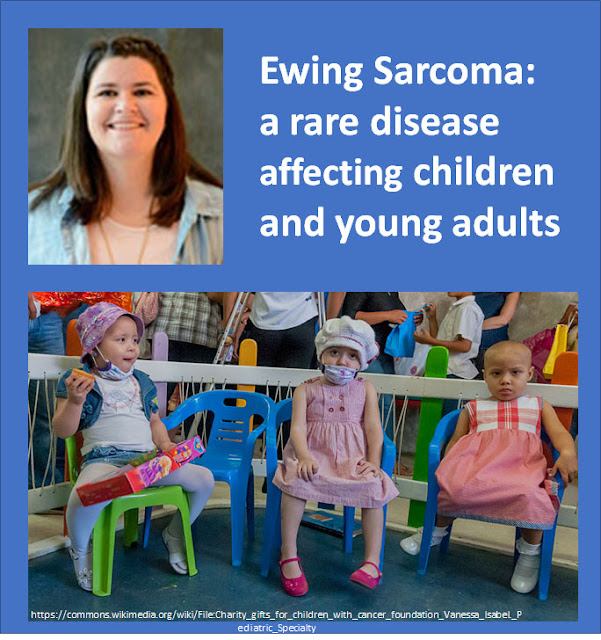Ewing Sarcoma: A Rare Disease Affecting Children and Young Adults
By Kathleen Grogan,
MBS 2018, Geisinger Commonwealth School of MedicineKGrogan@som.geisinger.edu
Mentor: Dr. John Arnott, PhD
Every day, 43 families hear the words “your child has cancer.” Pediatric cancer is the leading cause of death by disease for children in the United States. It has been estimated that 15,270 children will be diagnosed with cancer in 2017, and 1,790 will die from cancer. Ewing sarcoma (ES) is a type of pediatric cancer that forms in the bones or soft tissues. Whereas ES is rare and only accounts for 1% of pediatric cancers diagnosed per year, 225 children diagnosed with ES annually is still too many. Ewing sarcoma mostly affects children and young adults, and is most common among youths of 10 to19 years of age. For unknown reason, ES affects more males than females, and it has a higher incident rate among Caucasians. The main sites of tumor growth are in the pelvic area, ribs, and the legs. Research has shown that Ewing sarcoma is due to a genetic change in the patient’s chromosomes, and this change happens after birth. It is caused by a translocation, in other words a “cut and paste” of chromosome 11 and chromosome 22. As a result, a protein is formed that allows for the development of cancer cells. Ewing sarcoma has not been shown to be inherited from the parents.
Whereas everyone experiences ES differently, the classic symptoms of ES include pain and swelling at the tumor site, weakness and fatigue and unwanted weight loss. Since some of these symptoms are often associated with puberty growth, there is sometimes a major time lapse between when the symptoms appear and the initial diagnosis. ES sarcoma can be diagnosed by a wide range of tests such a complete physical exam, MRI, CT, PT or bone scans, a bone marrow biopsy, and a complete blood count. In most cases, a combination of tests is performed to diagnose Ewing sarcoma.
Prognosis not only in Ewing sarcoma, but also in all types of pediatric cancer has increased dramatically over the past few decades due to the introduction of chemotherapy for treatment. In order to have the best treatment of ES, it must be determined if the tumor has metastasized to other parts of the body. If the tumor is localized to only one site, the 5-year survival rate is between 65-70%. However, if the tumor has become a metastatic disease, the survival rate decreases to 25-30%. Specific treatments vary from patient to patient and are dependent on the initial diagnosis and on whether the tumor has metastasized. The standard treatment includes chemotherapy, radiation and sometimes surgery. Chemotherapy is usually given to the patient for up to a year or longer, depending upon the diagnosis. When a patient is diagnosed with Ewing sarcoma, he or she will have a wide range of medical specialists helping them in the fight of their life; these include but are not limited to a pediatric oncologist, radiation oncologist, and orthopedic surgeon.
Research is currently being done to find other drug therapies that will target Ewing sarcoma at the molecular level. The hope is that a specific treatment will soon be available, it will exhibit minimal side effects, and will increase the rate of patient survival.
Here is an animation on this subject: https://www.powtoon.com/online-presentation/cvxP15OJa4t/?mode=movie#/.



Comments
Post a Comment